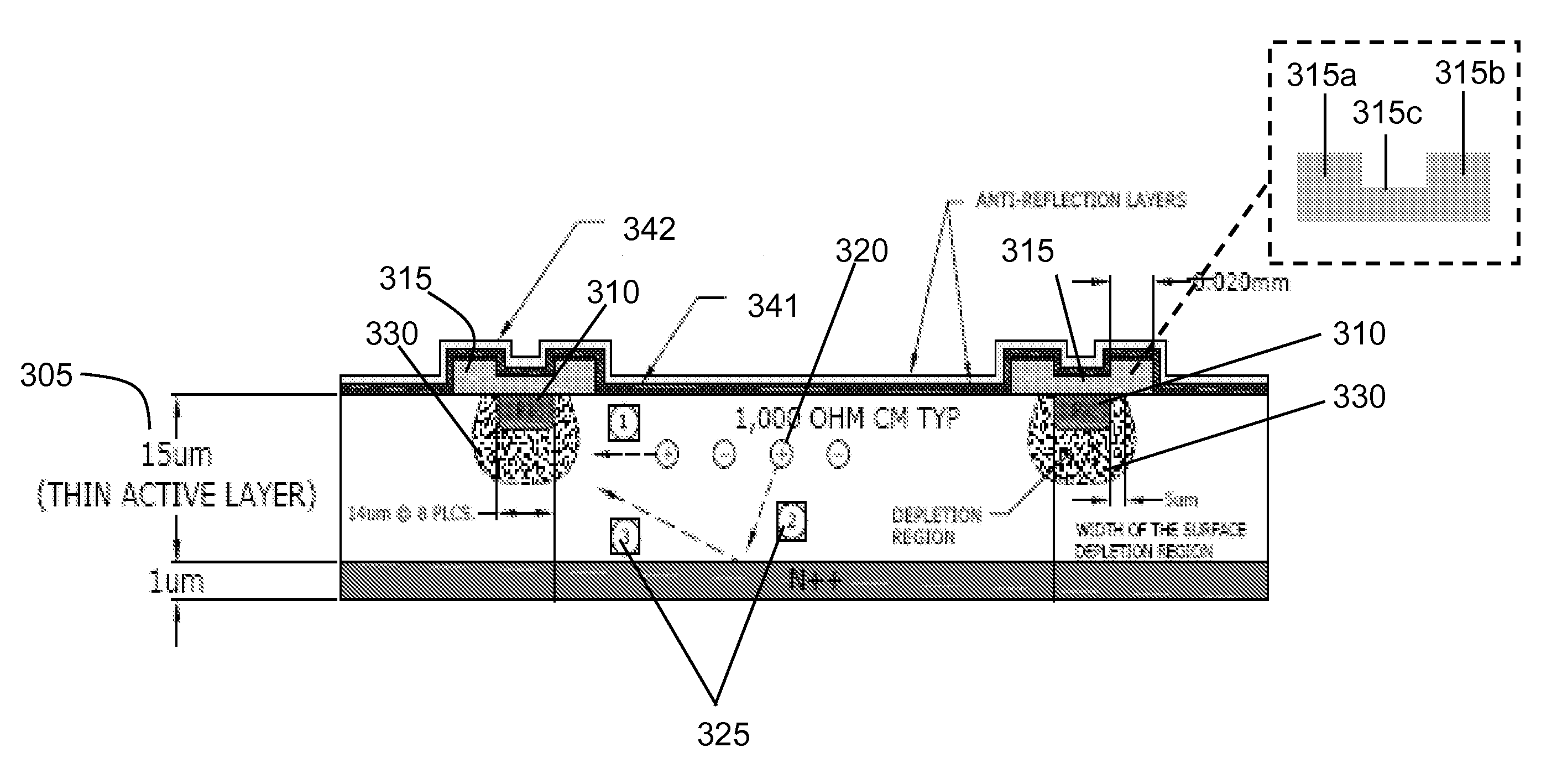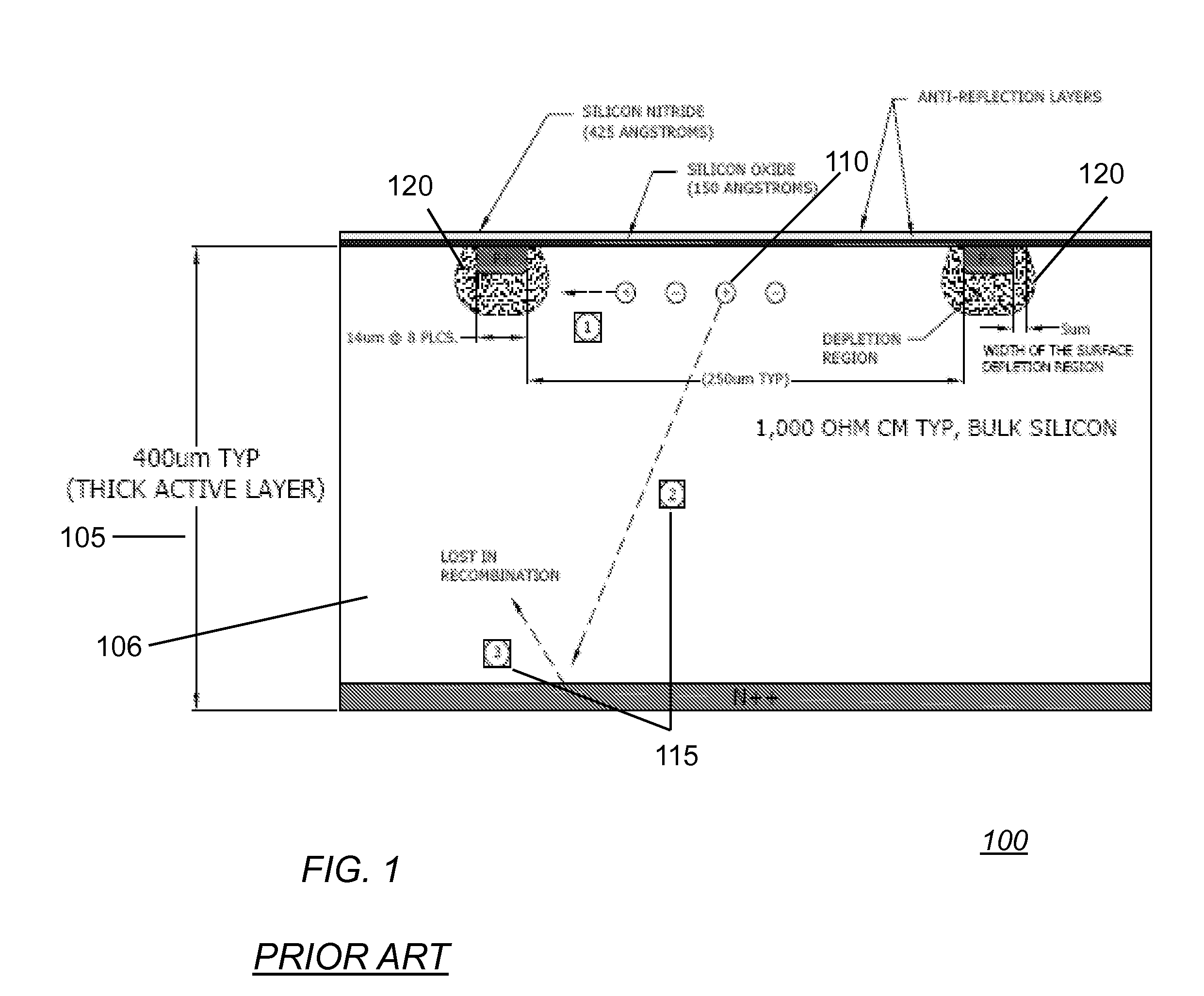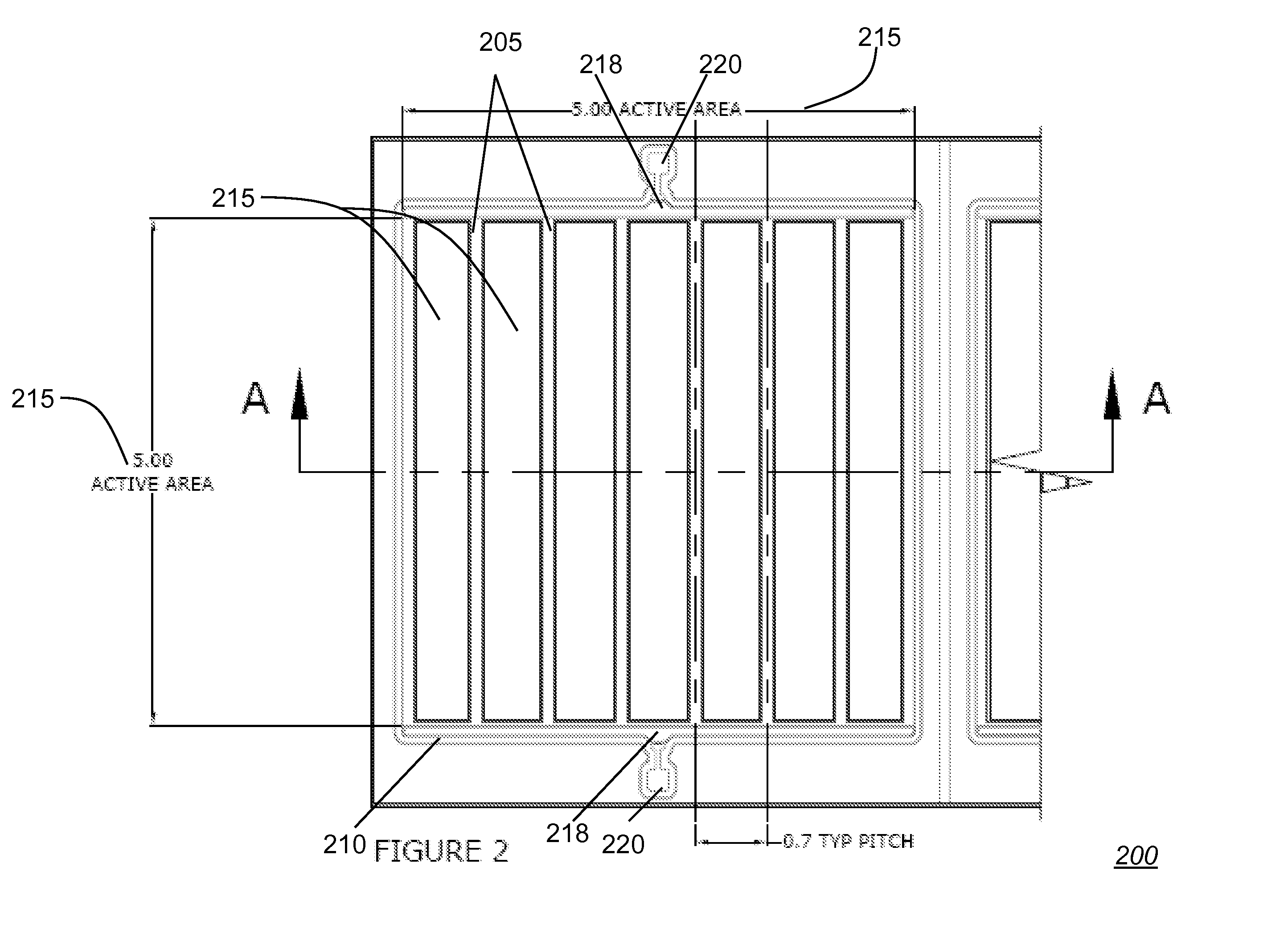Thin active layer fishbone photodiode and method of manufacturing the same
- Summary
- Abstract
- Description
- Claims
- Application Information
AI Technical Summary
Benefits of technology
Problems solved by technology
Method used
Image
Examples
Embodiment Construction
[0053]The present invention is directed towards a photodiode array having a fishbone design that can be fabricated on a material having intermediate resistivity, such as, but not limited to 1000 Ωcm. Such devices are commonly used in CT and X-ray applications. In particular, the present invention is directed towards a fishbone structure photodiode, comprising p+ diffused areas that are small and narrow, resembling fingers or fishbones. Since the p+ diffused areas areas are reduced, the capacitance of the resultant photodiode is less than the capacitance of a standard diffused photodiode were the full active area is diffused.
[0054]The photodiode array of the present invention thus overcomes the disadvantages of the conventional photodiodes described above by placing the p+ fishbones at a greater distance from each other, thus necessitating the use of fewer p+ fishbones, reducing the overall junction capacitance. In addition, a thin active layer is employed, reducing leakage or “dark”...
PUM
 Login to View More
Login to View More Abstract
Description
Claims
Application Information
 Login to View More
Login to View More - R&D
- Intellectual Property
- Life Sciences
- Materials
- Tech Scout
- Unparalleled Data Quality
- Higher Quality Content
- 60% Fewer Hallucinations
Browse by: Latest US Patents, China's latest patents, Technical Efficacy Thesaurus, Application Domain, Technology Topic, Popular Technical Reports.
© 2025 PatSnap. All rights reserved.Legal|Privacy policy|Modern Slavery Act Transparency Statement|Sitemap|About US| Contact US: help@patsnap.com



